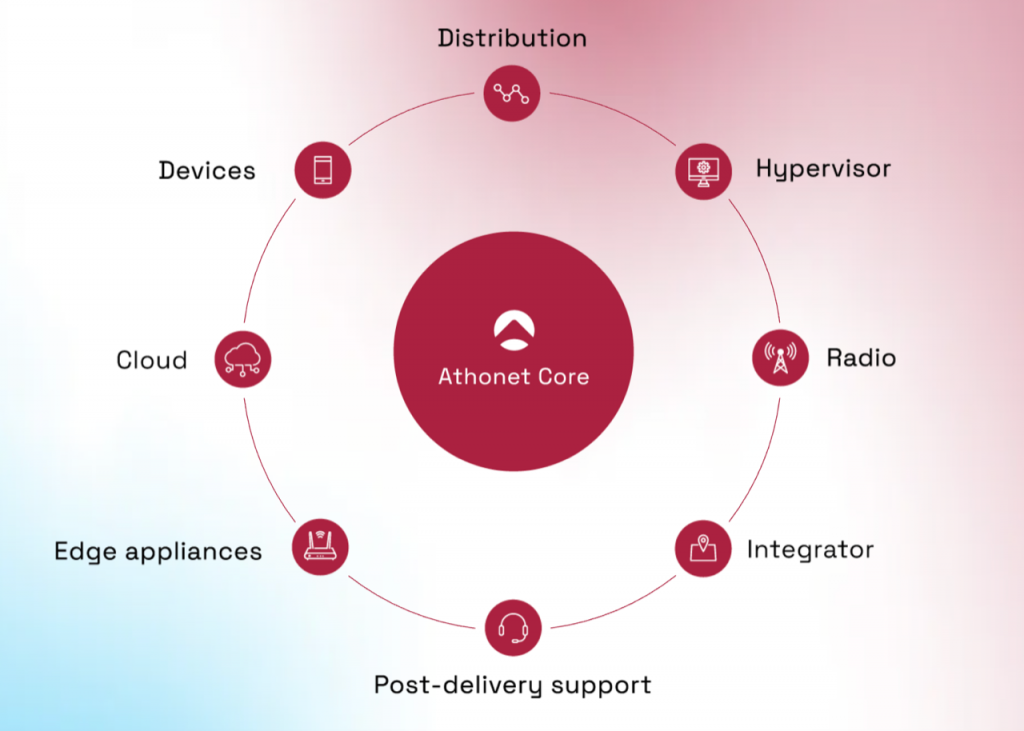When wireless security, reliability and wide-area performance matter, more and more companies are turning to private networks. Private LTE or 5G networks allow you to control who can be connected, and they have greater range, better voice handling, and higher overall reliability than most wi-fi networks. However, many companies don’t know where to start when designing a private network, what components are needed, or how to maintain the network once it is up and running, says Simon O’Donnell, president of Athonet USA.
The 5G Consortium was developed to help simplify the process of designing, implementing and maintaining a private network. In this article, we’ll discuss the overall process, take a look at what makes up a private wireless network, and give you pointers on how to get started.
The process often starts with an evaluation of what is needed for the business. Many companies will turn to an external advisor or consultant to evaluate their needs, create a business case, and calculate anticipated ROI for deploying the private network. The investment plan can help gain approval for the project with upper management. Once the plan is approved and budget secured, the next step is usually identifying the right technologies and vendors.
Many companies don’t have the expertise to source and implement all the elements of a private network, so they turn to distributors and/or system integrators to assemble these components and get them working.
A distributor can source the recommended hardware and software components, so everything is available at the time of deployment.
A system integrator is a provider who can design solutions and connect the components and make sure they work well together. Integrators do everything from pulling cable to installing software to testing and maintenance of the completed network.

With a plan in place and a system integrator to help, the next step is identifying the components needed for your private network.
The software that brings all the components together is the mobile core. Mobile core software is the heart of the network. It runs on a server, or edge appliance (see below) and it handles critical functions such as subscriber profile information, subscriber location, service authentication and necessary mobile traffic switching tasks. Currently, you must choose either an LTE or a 5G software module depending on the technology you want to use, but an LTE module can be upgraded via software to 5G. Vendors are now working on combined LTE/5G modules that support both technologies.
A hypervisor is software that sits on top of a server’s native (baked-in) operating system and the mobile core software, providing secure, dedicated operating space for the mobile core and enabling other virtual spaces for other software that may run on the same server.
The mobile core and hypervisor are both software, so you need an edge appliance, or server, to run them.In smaller deployments, the edge appliance generally resides on-premise, but you also have the option of deploying the mobile core and hypervisor in a cloud environment. If the deployment is across many sites, cloud software is deployed in a corporate data centre to manage connectivity across the network and among the various radios and devices at different sites.
Edge devices receive and transmit voice, data, and video over the network. These can be smartphones, tablets, laptop or desktop computers, or routers that convert the 4G/5G signal to Wi-Fi as an alternate connectivity option for computers and tablets. For example, in a manufacturing plant, you might use routers to connect IoT devices.
The next piece of a private network that you’ll need is a radio. Thisbroadcasts the radio signal to edge devices and receives signal from edge devices. These are typically small cell radios, but the size of the radio depends on the area being covered by the network. Small cells typically cover from 5-20 times as much area as Wi-Fi access points, which is one of the main benefits of a private LTE or 5G network. Large buildings or multi-site deployments require multiple radios.
One consideration that is sometimes overlooked is spectrum. For private cellular networks regulators have made mid-band spectrum in the 3.4-4.2 ghz range available. This makes it the optimal frequency to operate square mile networks as it gives excellent coverage and propagation without significant impacts from commonplace occlusions.
After all the components of the private networks have been identified, sourced and deployed either on-site or in a cloud data centre, ongoing support may be needed.
There are companies that can help with post-delivery support to assist in maintaining your private network. They have deep experience with optimizing and troubleshooting private mobile networks. They load software upgrades and provide ongoing support and maintenance.
The elements of a private network listed above will certainly get you started, but some industries may want to consider value-added services for their private network. These could include roaming (from the private network to the cellular network) or geolocation services.
If this seems like a daunting array of components to assemble, it can be, but some vendors are making it much easier to stand up a private network. For example, Athonet offers a private networking kit that incorporate all the components you need for deployment, including the mobile core, hypervisor, SIM cards, and a radio.
Now that you understand the process and the components needed for a private network, the 5G Consortium has a few pointers to help you get started.
- Some system integrators have expertise in certain verticals such as education, mining, manufacturing, utilities, or government. Look for a system integrator that has experience in your industry and has partnerships with key technology vendors.
- Choose a radio that meets your business needs. Will the network cover indoor and outdoor areas? Does the system need to cover hundreds or even thousands of square feet?
- Plan for the future. Although an LTE network may meet your current needs, work with your technology vendors to understand their path to 5G.
The 5G Consortium brings together system integrators and distributors, radio and device vendors, cloud vendors and hypervisor options together with the most trusted mobile core to show companies the end-to-end ecosystem that makes up a private mobile network.
The author is Simon O’Donnell, president of Athonet USA.
About the author
Simon O’Donnell is the president of Athonet USA where he is responsible for growth in North America for private 5G, strengthening strategic partnerships with solutions integrators and resellers, and developing vertical markets. Simon brings more than 20 years of experience across telecommunication and technology markets working with complex software solutions including Private LTE and 5G, text and multimedia messaging, Wi-Fi offload and roaming, VoWi-Fi, analytics, NFV and IoT.
Prior to Athonet, Simon held various executive roles at Parallel Wireless, Accuris Networks, Airwide Solutions and LogicaCMG. He holds a BSC in Applied Computing from the University of Ulster.
Comment on this article below or via Twitter: @VanillaPlus OR @jcvplus






